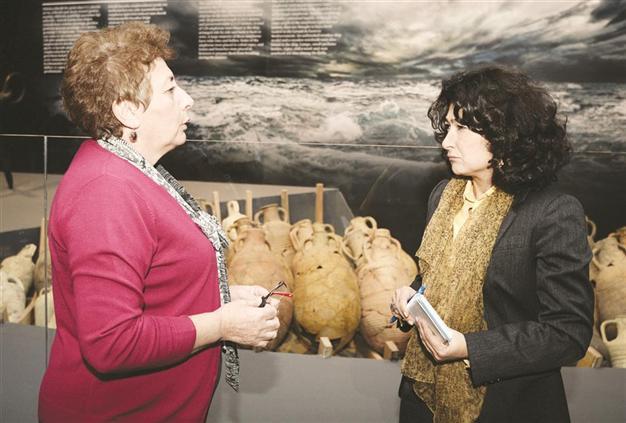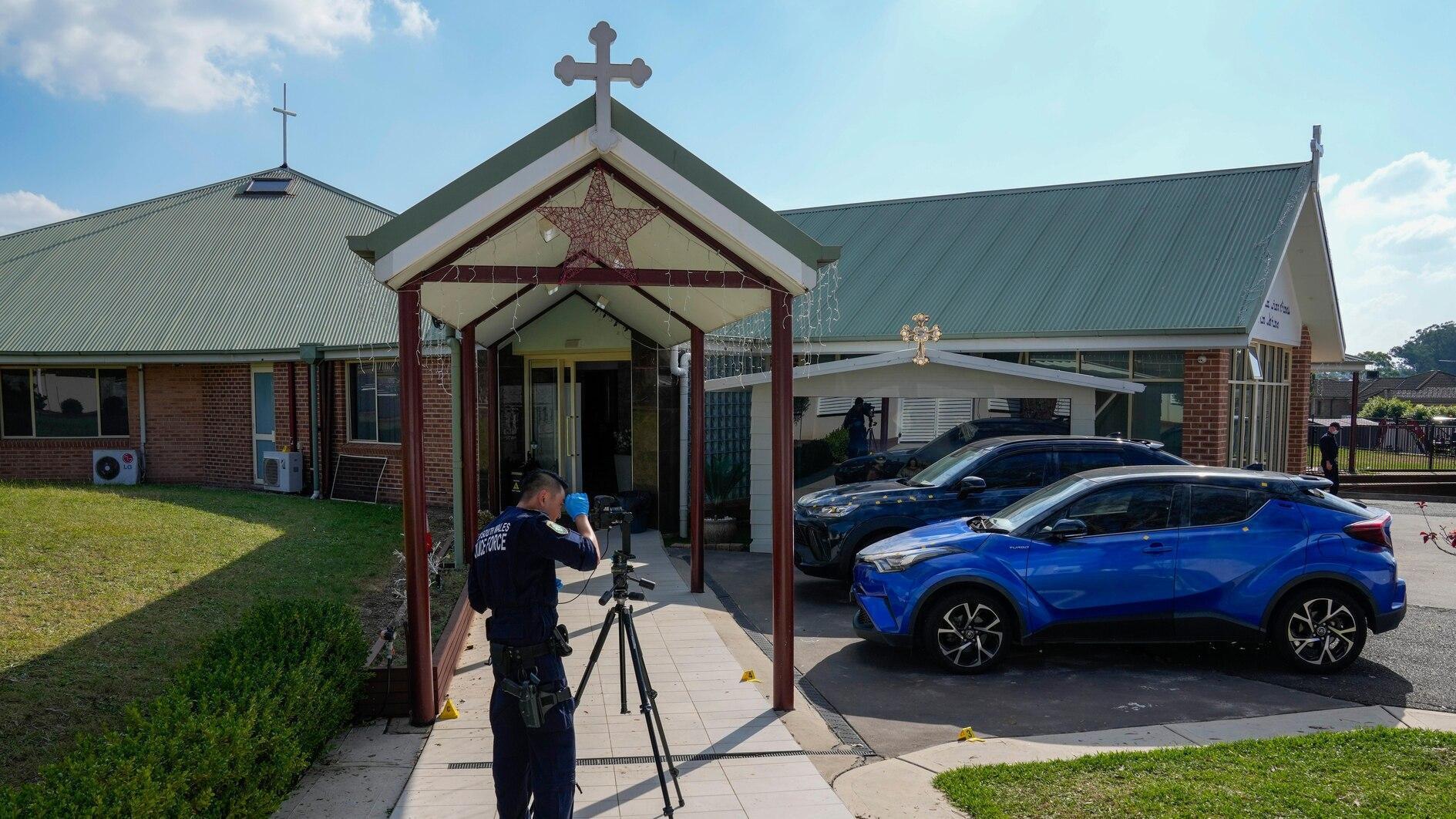'Marmaray and metro archaeological findings may take Istanbul's history back 6,500 years'
ISTANBUL – Hürriyet Daily News

Since 2004, but particularly since 2009, the scientific world has turned its attention to the excavations conducted in the heart of Istanbul, according to Zeynep Kızıltan. DAILY NEWS photo, Emrah Gürel
One unintended consequence of the Marmaray and metro, the two highly controversial megaprojects, has been the archaeological excavations that led to groundbreaking discoveries about Istanbul’s history.The discovery of a Neolithic settlement in Yenikapı, where the two projects intersected, pushed Istanbul’s known history back to 8,500 years ago.
“We had no clue of that settlement in Yenikapı and we would not have discovered it had it not been for these projects,” said Zeynep Kızıltan, the Director of Istanbul Archaeological Museums.
Different burial traditions dating back from Neolithic times indicate that groups from different cultures used to live together side by side and, if proven by the study on the DNA samples, this will mean that Istanbul’s cosmopolitan character dates back to prehistoric times, according to Kızıltan, who has been heading the excavations since 2008.
How and when did the archeological journey of these projects begin?
It started in 2004. As parts of the transportation projects were within archeological sites; we initially started exploratory excavations. We knew that there was a port in Yenikapı from written sources, but we did not know what it harbored. After passing the early Republican era and the Ottoman layers, we came across wet organic material at one meter below the sea level. Just as we were wondering what they were, we reached the remnants of the shipwrecks and then we decided to expand the excavations.
When did you realize you were about to discover something very big and significant?
After the first discovery of the first ship, which was then followed by the second and third; and by that time we expanded the excavations to 6.5 meters below sea level and archeological remains started to sort of gush out.
Can you tell us about the physical dimension of the excavations and the findings.
We conducted an open excavation within 40,000 square meters of an area of 58,000 square meters. After the Republican and Ottoman layers, we started to observe a change at one meter below water; so we entered the Byzantine cultural layer. This went on until 6.5 meters below sea level. We unearthed the port that was constructed in the fourth century by Theodosius which was functional until the 11th century. Remains of 37 ships of different dimensions and types dated from the fifth and 11th centuries were unearthed. Some were found with their cargo. In addition to numerous amphorae of various types, we found remains of animals, parts of human skeletons, various wood material; we came across whatever was used during daily life. Just as we reached the bottom of the port at minus 6.5 meters and were getting prepared to leave the ground; we came across a different type of material. Handmade, rough-looking ceramic parts. As we were wondering and trying to make an assessment, we realized that we were facing a group of materials dating back to prehistoric periods.
There was a huge time gap between them and the Byzantine remains. We started to lift the stones at the bottom and came across a new cultural layer and reached the Neolithic cultural layer that took the historic peninsula back to 8,500 years from now. We found wooden and stone materials used in the daily life of the Neolithic age and as we were wondering and trying to make a definite assessment we reached the graves and once we found the graves it was certain that we had reached the Neolithic period when humans went from a hunter-gatherer lifestyle to a sedentary farming lifestyle. We thus discovered the first Istanbulites in the historic peninsula.
Can you give a numerical sense of the findings?
Just in the Byzantine layer we have 45,000 items registered in the inventory. We have 200,000 cases with the sort of broken amphorae. In addition, there are thousands of animal bones.
Where do you place this discovery when you compare it with other examples in the world?
I do not think there has ever been an open excavation over 40,000 square meters in the world. If there has been I am not aware of it.
Tell us about the scientific aspect of the excavations.
We embarked on a journey for the past nine years and it has been uninterrupted. There is no uninterrupted excavation in the world; usually it lasts for maximum three months in a year. We worked 24/7 in three shifts. You never see an excavation taking place at night but we did it because we had to do it. We raced against time and in a nine-year period we went back 8,500 years.
Istanbul’s history is known to go as far back as 2,600 years from our days. The fact that we reached the neolithic layer is a spectacular outcome for Istanbul’s history. The oldest settlements that are known to us in Istanbul are in Fikirtepe, Pendik on the Anatolian side and Yarımburgaz on the European side. But these are far away from the city center. We were not aware of, nor had we expected to find older settlements in the historic peninsula which is the heart of Istanbul. We have findings from the paleolithic age, dating back to 1, 1.5 million years in Yarımburgaz. Then we jump to the findings in Pendik and there was a gap between the two.
In addition, we still don’t have the final conclusions but we found 16 graves with different burial traditions. Some are simply buried in the ground in fetal position. Some are burned and the urns with their ashes are buried. In others, the deceased is laid down in the fetal position. Parallel thin lumbers are located beneath the deceased at intervals, the body was laid down upon them, and on top the deceased was covered by a large perpendicular lumber.
What does this tell us?
This indicates that people coming from different cultures used to live together side by side. It is not certain, but either these are different traditions of burial of the same culture; which is highly unlikely, or more probably, different groups used to live together.
This means that Istanbul’s current cosmopolitan characteristic dates back to prehistoric times.
Why not. Of course we sent the DNA samples and we are waiting for the result to see whether they are coming from the same race or from different races. We also found the foot prints of these people. In general, everything is abstract when it comes to the humans themselves. But we saw the existence of these humans by touching their foot prints. We have found 2,080 footprints and traced four or five steps.
What do the excavations mean in terms of Byzantine history?
The ships are a very important collection in the world. It will provide ample information about the ship construction and navigation technology at the time, as well as the trade relations.
So there is also a real challenge lying ahead.
We worked in the shadow of bulldozers and we tried not to compromise scientific methods. We raced against time and we tried to conserve the materials with the least possible loss of information. Scientific studies have already been going on and they should continue and these findings should be shared with the scientific community and obviously the public should also have the means to see our findings. Istanbul Greater Municipality will build a museum of 30,000 square meters in Yenikapı where we will continue our work.
How was the interest in the world?
Huge. Since 2004-5 but on an increasing level since 2009-10, the whole attention of the scientific world as well as international press was upon us.
Were you open to international cooperation?
We proceeded with the cooperation of all national and international universities’ expertise. I believe we did not turn down any request that remained within the rules of our procedures.
Mega projects are usually hugely criticized.
We came across these findings thanks to these transportation projects. Of course these projects might have some disadvantages as well. But one of the main advantages of these projects has been these excavations. We had no clue about that settlement in Yenikapı and we would not have discovered it had it not been for these projects. And no one would have allocated that amount of money for these excavations. The excavations have been a present of these projects to Istanbul.
Who is Zeynep Kızıltan?
Zeynep Kızıltan worked in Istanbul University, Ministry of Culture as well as at various local conservation boards in İstanbul.
She joined the Istanbul Archeology Museums in 1986.
She worked as a museum researcher, archeologist and department head.
She participated in several excavations in Anatolia as a Ministry representative.
She has contributed in the organization of numerous exhibitions organized within Turkey and abroad.
In addition to several publications she continues to contribute to the organization of exhibitions and publications of one of Istanbul’s major projects, Mararail, metro excavations.
She started to head the excavations in 2008, assuming the directorship of Istanbul Archaeological Museums in 2009.
















